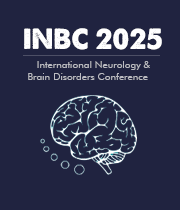Title : Amyloid Beta oligomerisation drives tau hyperphosphorylation by driving excessive long-term depression of synapses; a suggested physiological link between amyloid plaques and tau tangles
Abstract:
Alzheimer’s Disease (AD) is characterised by accumulation of plaques of aggregated amyloid b and intracellular hyperphosphorylated tau. The mechanistic links between these two histopathological phenomena are as yet unknown. Soluble oligomeric assemblies of amyloid b (Abo) drive disease pathology and have immediate effects at the synapse. Specifically, they can cause spine loss, with early symaptic plasticity changes, including attenuation of long-term potentiation (LTP), and facilitation of long-term depression (LTD), a metasplastic shift leading to widespread postsynaptic weakening. We show that Abo enhance presynaptic neurotransmitter release, and show that reducing presynaptic release probability can rescue Abo-enhanced LTD. Furthermore, evidence suggests that tau plays a physiological role in LTD induction, including AMPAR endocytosis, and it is phosphorylated physiologically during LTD induction. We hypoethesised that Abo might recruit pathologically hyperphosphorylated tau via it’s physiological involvement in LTD, postulating that chronic LTD favouring conditions as a result of increased presynaptic release probability lead to over phosphorylation of tau at extra, non physiological sites and leading to its aggregation and formation of neurotoxic oligomers. We demonstrate that Abo increase tau phosphorylation at disease-associated sites, and furthermore, that chronic, repetitive induction of NMDAR-dependent LTD via chemical or optogenetic stimulation can mimic this effect, phosphorylating tau at epitopes associated with AD. This, therefore suggests a possible mechanistic link between aberrant Abo aggregation and pathological tau phosphorylation whereby enhanced presynaptic release leads to a metaplastic shift favouring excessive LTD, which in turn causes over-phosphorylation at extra-physiological, pathological sites. By understanding the mechanisms linking these two histopathological hallmarks of AD, we hope to shed more light on the disease mechanism, hopefully leading to further therapeutic strategies and identification of substrates to allow for earlier diagnosis.



